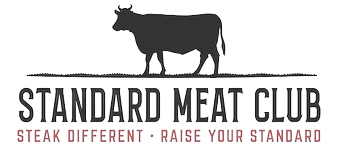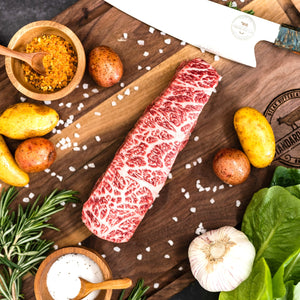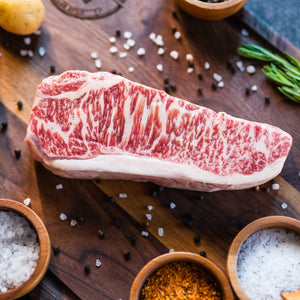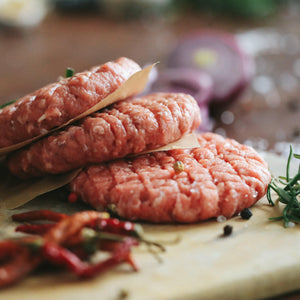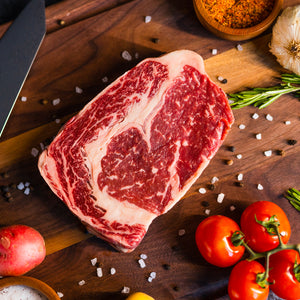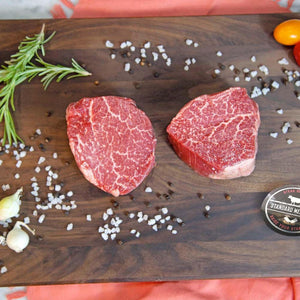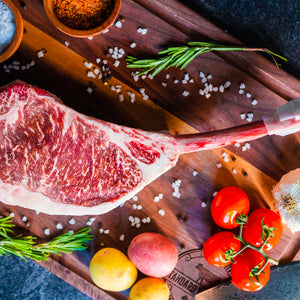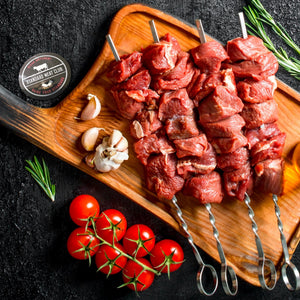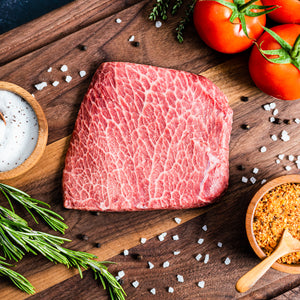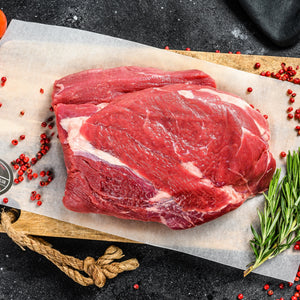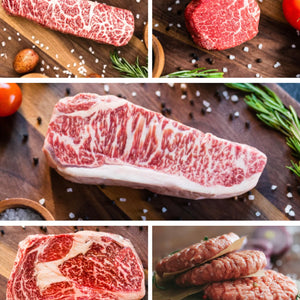The Ultimate Guide to Wagyu Beef: A Culinary Delicacy
Aug 20, 2024
Introduction
Wagyu beef has become synonymous with luxury and unparalleled taste in the culinary world. This comprehensive guide will explore the origins, characteristics, and preparation methods of this exceptional meat, helping food enthusiasts and curious diners alike understand what makes Wagyu truly special. From its rich history to modern farming practices, we'll delve deep into the world of this prized beef.
The History of Wagyu Cattle
The story of Wagyu begins in Japan, where these cattle have been bred for over 2,000 years. Originally used as draft animals in agriculture, Wagyu cattle were selectively bred for their physical endurance, which inadvertently led to increased intramuscular fat cells – the key to Wagyu's signature marbling.
Key historical milestones:
- 1868: The Meiji Restoration lifted a ban on beef consumption in Japan
- 1919: The first Wagyu cattle were exported to the United States
- 1997: Japan declared Wagyu cattle a national treasure and banned further exports
What is Wagyu Beef?
Wagyu, literally meaning "Japanese cow," refers to several breeds of cattle native to Japan. These breeds are known for their genetic predisposition to intense marbling, which results in a tender, flavorful meat that's highly prized by chefs and gourmands worldwide.
Key Wagyu Breeds:
- Japanese Black (Kuroge Washu)
- Makes up 90% of Wagyu beef in Japan
- Known for its intense marbling and rich flavor
- Japanese Brown (Akage Washu)
- Also called Red Wagyu
- Leaner than Black Wagyu, with a stronger beef flavor
- Japanese Shorthorn (Nihon Tankaku Washu)
- Lean and rich in umami flavor
- Rarely found outside Japan
- Japanese Polled (Mukaku Washu)
- The rarest of the four breeds
- Bred for their lack of horns
The Secret Behind Wagyu's Marbling
The hallmark of Wagyu beef is its extensive marbling—the intramuscular fat that gives the meat its characteristic flavor, tenderness, and juiciness. This marbling is a result of:
- Genetics: Wagyu cattle have been selectively bred for centuries to enhance marbling.
- Diet: A carefully controlled diet rich in grains and sometimes even beer or sake.
- Stress-free environment: Wagyu cattle are raised in calm conditions to ensure high-quality meat.
The Science of Marbling
Marbling occurs when fat is deposited within the muscle fibers of the meat. In Wagyu cattle, this process is enhanced due to:
- Higher number of fat cells (adipocytes)
- Longer fattening period (up to three years)
- Genetic predisposition to store fat intramuscularly
This intense marbling leads to a lower melting point for the fat, resulting in the characteristic "melt-in-your-mouth" texture that Wagyu is famous for.
Wagyu Raising Practices
The production of Wagyu beef is as much an art as it is a science. Farmers employ various techniques to ensure the highest quality meat:
- Stress Reduction: Cattle are often given names, regular massages, and even music to listen to, reducing stress and preventing toughening of the meat.
- Controlled Diet: A diet of grains, grass, and sometimes even beer or sake mash is used to encourage marbling.
- Extended Raising Period: Wagyu cattle are typically raised for 2-3 years, compared to the 15-18 months for regular beef cattle.
Grading Wagyu Beef
Wagyu beef is graded based on its marbling, color, firmness, and texture. The Japanese Beef Marbling Standard (BMS) ranges from 1 to 12, with 12 being the highest level of marbling.
Japanese Beef Grading System:
- A5: The highest grade, with exceptional marbling (BMS 8-12)
- A4: Excellent quality with very good marbling (BMS 6-7)
- A3: Good quality with above-average marbling (BMS 4-5)
The letter (A, B, or C) refers to the yield grade, while the number (1-5) indicates the meat quality grade.
Wagyu vs. Kobe Beef
While all Kobe beef is Wagyu, not all Wagyu is Kobe. Kobe beef comes from a specific lineage of Japanese Black cattle raised in Hyogo Prefecture, following strict regulations.
Kobe Beef Criteria:
- Must be pure Tajima-gyu lineage
- Born, raised, and processed in Hyogo Prefecture
- Marbling score of 6 or above
- Meat quality score of 4 or 5
- Carcass weight of 470 kg or less
Global Wagyu Production
While Japan remains the premier source of Wagyu, other countries have begun producing their own versions:
- Australian Wagyu: Crossbred with local cattle, known for consistent quality
- American Wagyu: Often crossed with Angus cattle, resulting in a beefier flavor
- European Wagyu: Emerging producers in countries like Germany and the UK
Cooking Wagyu Beef
Due to its high fat content, Wagyu beef requires special preparation:
- Bring to room temperature before cooking
- Use high heat for a short time to sear the outside
- Cook to medium-rare at most to preserve tenderness
- Let rest before serving to redistribute juices
Popular Wagyu Dishes:
- Teppanyaki: Grilled on an iron griddle
- Shabu-shabu: Thinly sliced and cooked briefly in hot broth
- Sukiyaki: Simmered in a sweet soy sauce-based broth
- Steak: Simply grilled to showcase the beef's natural flavors
Health Benefits of Wagyu
Despite its high fat content, Wagyu beef offers some surprising health benefits:
- Rich in monounsaturated fats, similar to those found in olive oil
- High in omega-3 and omega-6 fatty acids
- Contains more conjugated linoleic acid (CLA) than regular beef
- Source of essential amino acids and B vitamins
Sustainability and Ethical Considerations
As Wagyu's popularity grows, so do concerns about sustainability and animal welfare:
- Environmental Impact: The long raising period and grain-heavy diet can have a significant carbon footprint.
- Animal Welfare: While Wagyu cattle are generally well-cared for, some argue against the ethics of breeding animals for such high fat content.
- Authenticity: With the rise of "Wagyu-style" beef, consumers need to be vigilant about the authenticity of their purchases.
Where to Find Wagyu
Authentic Wagyu can be found in high-end restaurants, specialty butcher shops, and through online retailers. Be wary of imitations and always verify the source of your Wagyu.
Tips for Buying Wagyu:
- Look for certification from reputable organizations
- Check the grade and origin of the beef
- Be prepared to pay a premium price for authentic Wagyu
- Consider starting with smaller cuts to experience the flavor without breaking the bank
The Future of Wagyu
As global demand for Wagyu continues to grow, we're likely to see:
- Increased focus on sustainable farming practices
- Development of new Wagyu crossbreeds
- Expansion of Wagyu production to new regions
- Innovation in Wagyu-based products (e.g., Wagyu jerky, burgers)
Conclusion
Wagyu beef stands as a testament to the art of cattle raising and the pursuit of culinary excellence. Its unparalleled taste, texture, and quality make it a true delicacy worth experiencing for any food lover. Whether you're a seasoned connoisseur or a curious first-timer, exploring the world of Wagyu beef promises a journey of unforgettable flavors and textures.
